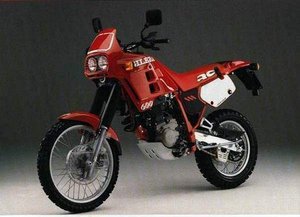Gilera 600 RC [1989–1992]: A Rally-Bred Enduro with Italian Flair

The Gilera 600 RC is a machine that refuses to fade into obscurity. Born from the brand’s rally-racing ambitions in the late 1980s, this single-cylinder enduro motorcycle blends Italian engineering audacity with Dakar-proven durability. Designed to conquer deserts and carve through backroads alike, the 600 RC generation (1989–1992) remains a cult classic for riders who value raw character over polish. Let’s dissect what makes this bike tick—and why it still turns heads decades later.
Design: Form Follows Function (with a Dash of Flair)
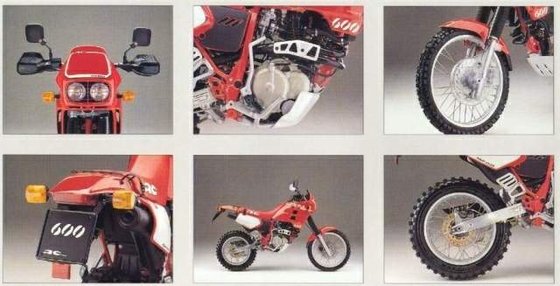
The Gilera 600 RC’s design screams purpose. Its angular bodywork, dominated by a boxy fuel tank and minimalist fairing, reflects its rally-racing DNA. The cockpit is utilitarian: a simple speedometer, tachometer (on later models), and temperature gauge cluster behind a small windscreen. The seat is narrow and firm, prioritizing rider mobility over long-haul comfort—a reminder that this bike was bred for standing-on-the-pegs aggression.
At 174 kg (383.6 lbs) wet, the 600 RC isn’t a featherweight, but its mass is centralized around the liquid-cooled 558cc single-cylinder engine. The steel frame, paired with a cast aluminum swingarm, strikes a balance between rigidity and off-road flexibility. Suspension travel is generous: 160mm (6.3") up front via 41mm Marzocchi forks and 260mm (10.2") at the rear with a Boge monoshock. This setup gives the bike a tall stance (890mm seat height), demanding confidence at stops but rewarding agility in motion.
Tires are a mixed bag. The 21-inch front (90/90-21) and 17-inch rear (130/80-17) combo, wrapped in period-appropriate Dunlop Trailmax rubber, work adequately on gravel but clog quickly in mud—a hint that the 600 RC prefers fast fire roads over sloppy trails.
Performance: A Thumper with Teeth
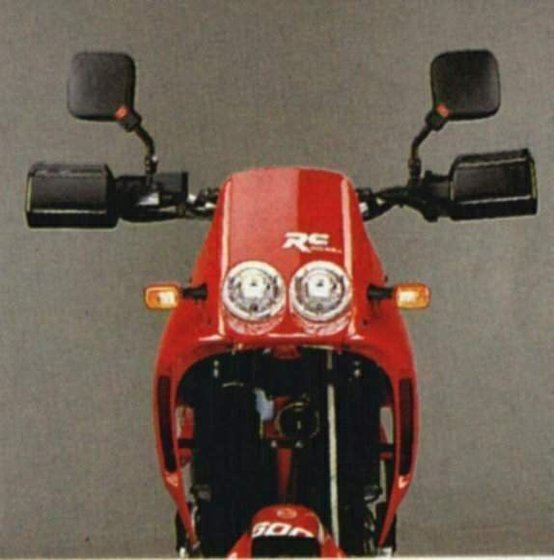
Engine: The Heart of a Lion
The 558cc single-cylinder engine is the star here. With a DOHC head, four valves, and liquid cooling, it’s a technical marvel for its era. Output varies slightly across sub-models: the standard 600 RC churns out 46–49.5 HP (34–36.5 kW) at 7,000–7,250 RPM, while the rally-focused 600R nudges 53 HP (39.5 kW). Torque peaks at 51 Nm (37.6 lb-ft) at 5,500 RPM—a broad, usable curve that pulls strongly from mid-rev.
Cold starts can be theatrical. Early models rely on a kickstarter (later versions add electric start), requiring a firm boot and patience. Once warm, the engine settles into a lumpy idle that smooths out past 2,500 RPM. By 3,500 RPM, the Gilera wakes up: the intake snarls through twin 30mm carburetors, and the exhaust barks a deep, metallic note. Acceleration is urgent but not explosive—enough to loft the front wheel in first gear with a tug on the bars.
Top speed hovers around 161–164 km/h (100–102 mph), though sustaining triple-digit speeds on a naked enduro is a workout. Vibration is ever-present but manageable, thanks to a balancer shaft that tames the worst high-frequency buzz.
On-Road Manners
Surprisingly, the 600 RC shines on pavement. The steepened steering geometry (a revision for the 1990s models) lends sharp turn-in, and the wide handlebars offer leverage for quick direction changes. At highway speeds, the bike tracks straight with minimal weave—a rarity in big singles of this era. Braking is adequate: single 260mm front and 220mm rear discs lack modern bite but provide progressive feedback.
Off-Road Prowess
Here, the Gilera’s rally heritage shines. The long-travel suspension soaks up rocks and ruts, and the torquey engine bulldozes up hills without fuss. Standing up, the bike feels balanced, though the weight becomes noticeable in technical terrain. The Achilles’ heel? Those Trailmax tires. Swap them for knobbier rubber, and the 600 RC transforms into a legitimate off-road weapon.
Competition: How Does It Stack Up?
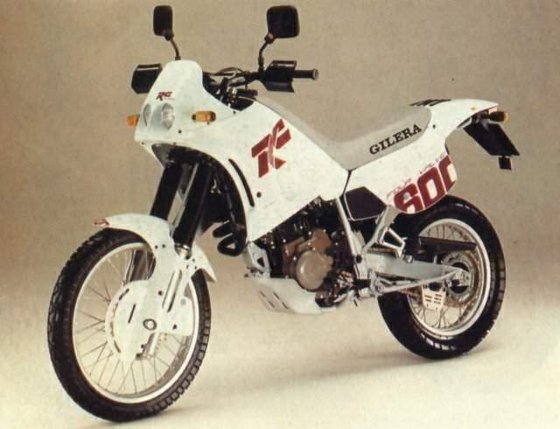
In the early ’90s enduro scene, the Gilera 600 RC faced stiff rivals:
-
Honda NX650 Dominator:
The Dominator’s air-cooled 644cc engine is smoother and more refined, but its 46 HP output trails the Gilera’s. Honda’s build quality and reliability are superior, but the Dominator feels tamer—less willing to play in the dirt. -
Suzuki DR650RS:
Lighter (153 kg dry) and simpler, the DR650RS prioritizes off-road agility over road manners. Its 45 HP engine lacks the Gilera’s top-end punch, but the Suzuki’s lower seat height and bulletproof reputation make it a crowd favorite. -
Cagiva Elefant 900:
The Elefant trades single-cylinder simplicity for a rorty 904cc V-twin. It’s faster and more comfortable on-road but heavier (205 kg wet) and pricier. The Gilera undercuts it in agility and Dakar pedigree.
Verdict: The 600 RC isn’t the most polished, but it’s arguably the most charismatic. It appeals to riders who crave a mechanical connection and don’t mind getting their hands dirty.
Maintenance: Keeping the Legend Alive
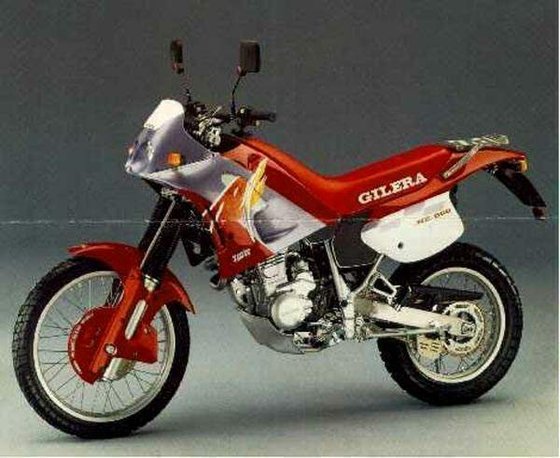
Owning a 30-year-old enduro requires vigilance. Here’s what to prioritize:
- Engine Care:
- Oil Changes: Use a high-quality 10W-50 synthetic oil every 3,000 km (1,864 mi). The DOHC valvetrain is sensitive to sludge.
- Valve Adjustments: Check every 6,000 km (3,728 mi). Shim-under-bucket design demands patience but ensures longevity.
-
Cooling System: Flush coolant annually. Inspect the radiator for debris—essential if ridden off-road.
-
Carburetor Tuning:
The twin 30mm Teikei carburetors gum up if neglected. Clean jets every season and consider upgrading to a modern air filter (MOTOPARTS.store offers direct-fit K&N replacements). -
Suspension Refresh:
Marzocchi forks benefit from fresh 10W oil and seal kits. The Boge rear shock tends to fade; a rebuild with heavier-grade fluid restores damping control. -
Chain & Sprockets:
The 520-size chain wears quickly under the single’s torque. Replace with an X-ring chain and steel sprockets for durability. -
Brake Upgrades:
Swap sintered pads for better bite. MOTOPARTS.store’s EBC HH pads are a direct fit for the front 260mm disc.
Conclusion: A Time Capsule Worth Riding
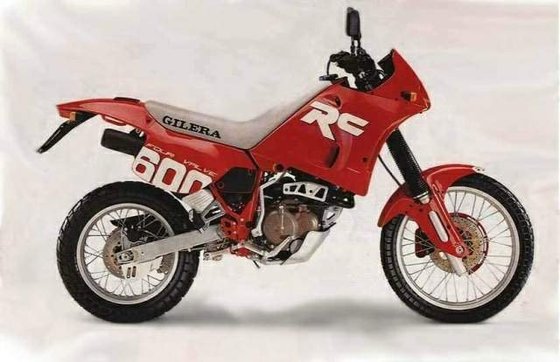
The Gilera 600 RC isn’t a motorcycle for everyone. It’s vibey, temperamental when cold, and demands mechanical sympathy. But for those who appreciate its rally-bred soul, it’s a revelation. Few bikes of its era blend on-road composure and off-road tenacity so effectively—or sound so gloriously unapologetic doing it.
Today, the 600 RC thrives as a project bike or a weekend warrior. With sensible upgrades (better tires, suspension tweaks), it remains capable of surprising modern riders. And isn’t that the mark of a true classic?
Looking to revive your Gilera 600 RC? Explore MOTOPARTS.store’s curated selection of performance upgrades, OEM replacements, and tuning kits tailored for vintage enduros. From carb jets to rally-spec footpegs, we’ve got your back—no matter where the trail ends.






Specifications sheet
| Engine | |
|---|---|
| Stroke: | Four-stroke |
| Max power: | 53 kW | 71.0 hp |
| Max torque: | 51 Nm |
| Fuel system: | 2x 30mm carburetor |
| Max power @: | 7800 rpm |
| Displacement: | 558 ccm |
| Fuel control: | Double Overhead Cams/Twin Cam (DOHC) |
| Max torque @: | 5500 rpm |
| Configuration: | Single |
| Cooling system: | Liquid |
| Compression ratio: | 10.5:1 |
| Number of cylinders: | 1 |
| Valves per cylinder: | 4 |
| Dimensions | |
|---|---|
| Dry weight: | 145 |
| Wet weight: | 174 |
| Seat height: | 890 mm (35.0 in) |
| Ground clearance: | 165 mm (6.5 in) |
| Fuel tank capacity: | 12 L (3.17 US gal) |
| Drivetrain | |
|---|---|
| Final drive: | chain |
| Chain length: | 118 |
| Transmission: | 5-speed |
| Rear sprocket: | 47 |
| Front sprocket: | 15 |
| Maintainance | |
|---|---|
| Rear tire: | 130/80-17 |
| Engine oil: | 10W40 |
| Front tire: | 90/90-21 |
| Spark plugs: | NGK CR8E or NGK CR8EIX |
| Coolant capacity: | 1.9 |
| Engine oil capacity: | 2.7 |
| Engine oil change interval: | Every 5000 km or 2 years, whichever comes first |
| Valve clearance check interval: | 24,000 km / 15,000 mi |
| Recommended tire pressure (rear): | 2.5 bar (36 psi) solo, 2.8 bar (41 psi) with passenger |
| Recommended tire pressure (front): | 2.25 bar (33 psi) |
| Chassis and Suspension | |
|---|---|
| Frame: | Steel |
| Rear brakes: | Single 220mm disc |
| Front brakes: | Single 260mm disc |
| Rear suspension: | Boge shocks with variable preload |
| Front suspension: | 43mm Kayaba telescopic forks (later models), 41mm Marzocchi forks (early models) |
| Rear wheel travel: | 260 mm (10.2 in) |
| Front wheel travel: | 160 mm (6.2 in) |



